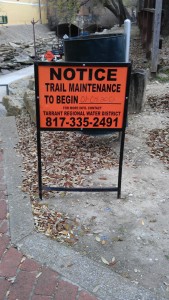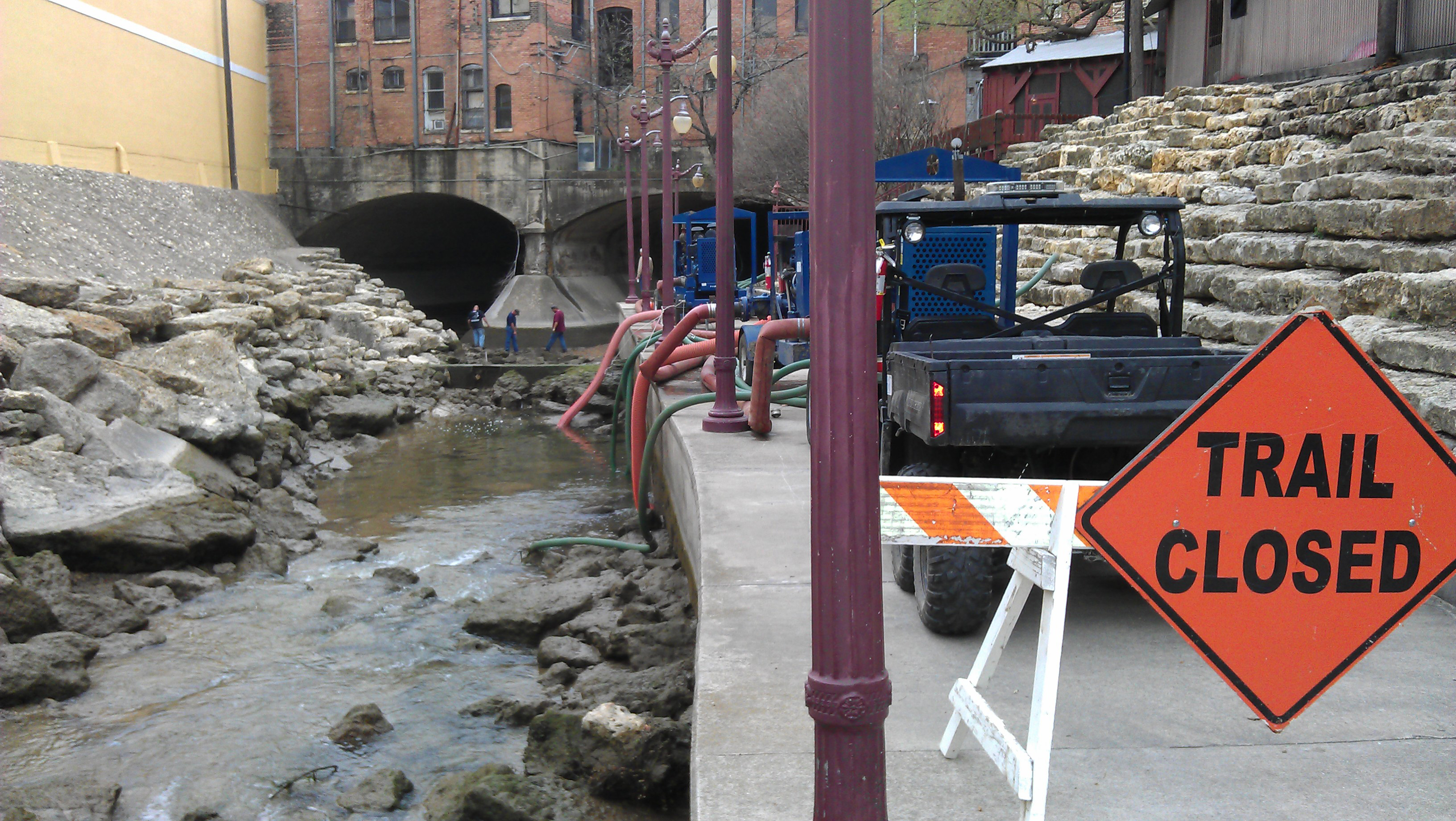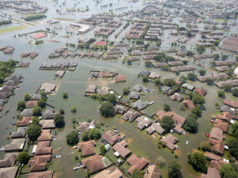For months, tattoo artist Drago Reid set up his easel each day to paint in Saunders Park next to Marine Creek in the Fort Worth Stockyards. But over time he grew frustrated that his artistic muse was cluttered trash and debris.
The park and creek are often overlooked by Stockyards visitors. The narrow park, below street level, follows the creek as it meanders through the historic district from North Main to Northwest 23rd streets.
Reid, who owns Knuckle Up tattoo parlor, worked in the Stockyards for four years before he found the park by chance. Park signage is scarce, and access is poor.
Last July, he and a friend tried to remove the litter that had accumulated along the creek from the heavy traffic of visitors, businesses, and vehicles above. They spent more than 30 hours over a two-week period hauling trash out of the water. But it wasn’t enough: The creek and park continued to accumulate trash with little apparent maintenance (“Stockyards Cesspool”, Nov. 16, 2011).
Now, however, things appear to be changing. In mid-December, the Tarrant Regional Water District received a letter about the trash backup, and officials made plans to clean the area.
In January a sign was posted, notifying passersby that the water district was taking over maintenance of the park and giving a phone number. The district has started posted similar signs at all of its maintenance projects along the Trinity.
“We want people to be able to contact us if there are problems or questions,” water district spokesman Chad Lorance said in an e-mail.
The water district moved equipment into the area in mid-February but couldn’t start the work until early March because of rain. It took three days to complete the initial cleanup. Last week the district removed the booms that had temporarily redirected water flow from the work area.
Reid said the difference is striking. “It looks awesome. There’s no trash in there at all. There are no stoppages,” he said. “They did a good job. The water was flowing, for once. It wasn’t actually stagnant.”

Lorance said there is no set schedule for cleanup along the Trinity River and its tributary creeks and that the water district needs people to bring problems to its attention. Otherwise, he said, the district won’t be back for maintenance until there is another accumulation affecting the water flow. It’s up to volunteers and community service organizations to help clear the trash along the creek and riverbanks, he said.
“Marine Creek Lake is a floodway management asset for the district, and we are responsible for making sure water flows effectively through the Marine Creek into the Trinity River just east of the Stockyards,” Lorance said in the e-mail. The district has worked to remove silt, trash, and other debris at different locations along the creek in the past few years.
Now that river levels are dropping after recent heavy rains, the district will do similar work along the Trinity to remove blockages near the low-water dams.
Maintenance of Saunders Park itself remains the responsibility of the city. Trash and litter are picked up twice a week at the half-acre park — the city has allotted only $2,150 for work there this year. And city officials said that, given the low level of usage of Saunders by citizens, that’s not likely to change.
“Our maintenance and litter schedule is based on the amount of use … in a park and the amount of litter that is corresponding to that use,” said Mark Woolsey, interim assistant director for the Fort Worth Parks and Community Services. If Saunders Park got more use, it would get more cleanup, he said.
Unfortunately for those who do use Saunders, it collects more trash than its visitor numbers account for. The narrow park is really mostly a concrete hike-and-bike trail that connects to the larger Trinity Trails system. It’s classified as a special-use park, like the Fort Worth Water Gardens.
Reid said he doesn’t see many people in the park. Most of those who visit are cyclists passing through, bar-hoppers going from a parking lot to the White Elephant Saloon, and occasionally a Stockyards worker, like him, taking a break outside.
Still, Reid calls the park a “hidden jewel,” a sentiment echoed by other frequent visitors.
Teresa Burleson, director of the Stockyards Museum, occasionally eats lunch at the park overlooking Marine Creek. The park is named for the Thomas B. Saunders family, who established the first cattle commission in the Fort Worth Livestock Exchange building.
“I think it’s a little hidden treasure,” she said. “I wish that people did know about it, because it’s a pleasant place.”
She recently posted a photo of the park on Facebook. Many people commented that they never realized there was a park and creek so close to the Stockyards, despite frequenting businesses in the area.
For those who already know of the park or wander into it by mistake, there’s a sign in the middle letting people know they’re in Saunders Park. But there are no signs at either of the main park entrances, on North Main near West Exchange Avenue. Most people enter it through the alley near Lonesome Dove Western Bistro, passing by garbage bins.
“It just looks like an alleyway walking past that dumpster to the park,” Burleson said. But she acknowledged that shop owners aren’t like to relocate the dumpsters. “Space is kind of limited down here,” she said.
Her main interest is getting more people to utilize the park and its concrete “rocks.”
“It would be a great background for photographs,” she said.
For now, Reid said, he is “absolutely 100 percent content” with what the water district has done. But he’s skeptical that the city will do the maintenance it should at Saunders, in part because the city is focused more on areas like West Seventh Street.
“They neglect everything that is not around the tourist area,” he said.












